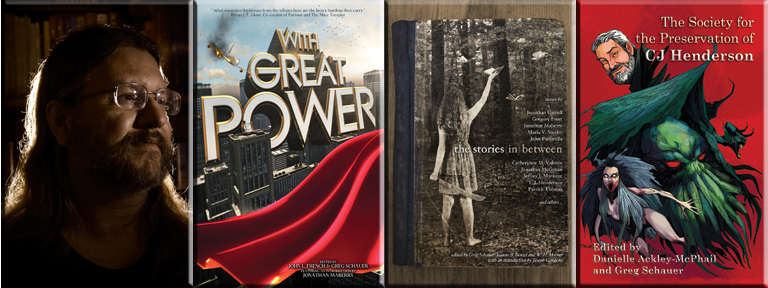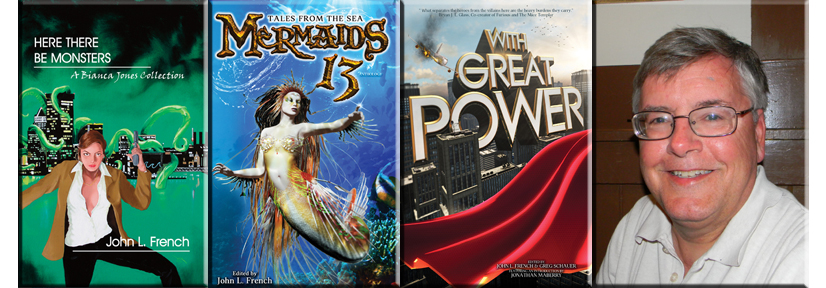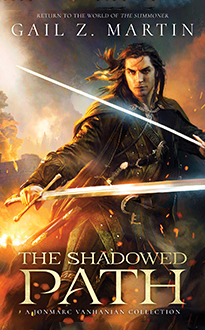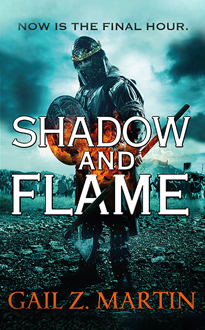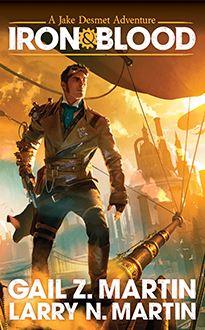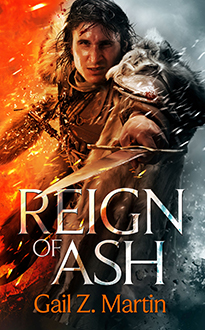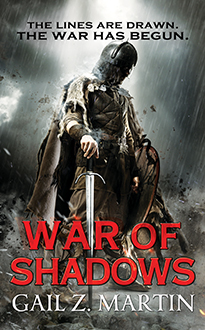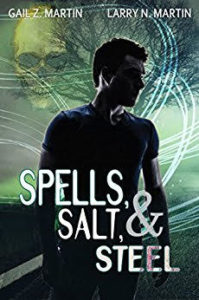By James Maxey
I love superheroes.
Like most people, this started when I was a kid. I’d watch the Superfriends on Saturday morning. I got excited at the I Love Lucy episode that guest starred Superman. Later, the Hulk and Wonder Woman had their own shows. I watched every episode.
Then I picked up actual comic books and things got seriously geeky. If your knowledge of superheroes comes from TV or even movies these days, you can name, what, fifteen superheroes? A couple of dozen, tops? Dive into comics and there are enough superheroes to fill encyclopedias. I used to make lists in alphabetical order cataloging all the members of the Legion of Superheroes, the Avengers, the Defenders, the Justice League. Teen Titans. X-men. Doom Patrol! Outsiders! Invaders! All-Star Squadron! Holy moly, the rosters were endless. In the days before Wikipedia, you had to really work to figure out who some obscure character appearing for a single page on the Avengers might actually be. (Jack of Hearts, anyone? Dr. Druid?) I would dig through boxes of musty, torn up comics at flea markets trying to assemble the various universes.
Unlike most people, this interest in superheroes didn’t vanish as I grew up. Instead, when I got to college, I started to place these heroes into a broader context of historical literature. Superheroes were the foundation of a modern mythology, a worthwhile evolution of the fairytale. The Justice Society used to sit around a round table; they were Arthurian Knights in a modern context.
Despite occasional tip toes into television, superheroes wound up identified with a single medium, the comic book. In the era of pulp fiction, superheroes could be found in prose, headlining their own magazines, like the Shadow. Once comic books came around, the costumed heroes packed up their bags and moved to the new, more visual medium, where their bright colors and miraculous feats found a natural home.
By the 1950s, prose super heroics had almost vanished. By the end of the millennium, only a few licensed properties, like Batman and Spiderman, still appeared in the occasional novel.
Which provided me with a dilemma when it came time for me to write my fourth bookl. The most fundamental advice for any writer is, write what you know. I knew superheroes. But superheroes didn’t appear in prose, and I wanted to write a novel, not script a comic book.
I finally obeyed an even more fundamental rule than “write what you know.” That rule is “do what you love.” So, with no hope whatsoever of seeing it in print, I sat down and started writing a superhero novel. I wrote the book I wanted to read that no one else had yet taken the time to write for me.
The main reason I wrote it was, when you really love something, you hate seeing it done badly. Let me be blunt: the vast majority of superhero fiction in any genre is pretty crappy. Characters that belong to the major publishers are property, and can never truly grow or change. The monthly nature of comic books means they get cranked out on a deadline whether the writers and artists feel inspired or not. They sell to a closed circle of readers, so there’s not much reason to change what they’re doing. The readers already know the characters, so there’s not that much exploration of character’s inner lives, and what little there is superficial. Most characters motives gets summed up in a single sentence: Batman fights crime because he watched his parents die. Wonder Woman was sent to man’s world to bring a message of peace. Aquaman… um, actually, I’m not clear on what his deal is. I know his powers. I don’t know his angels or his demons.
Of course, during the 80s and 90s, there was an effort made in some comics at treating superheroes as real people, peeling back the masks as it were. Unfortunately, treating heroes seriously somehow translated into treating them grimly, stripping away all joy, taking all their bright colors away to paint them in shades of dark gray and even darker gray. Every seemingly good action was shown to have some dark motive. We finally saw the demons on their shoulder, but the matching angels on the other shoulder were missing.
Having had my fill of heroes who were either two dimensional or joyless, I wanted to try my hand at a middle path. I wrote Nobody Gets the Girl treating the characters as realistically as possible, given that some of them fly, some are invisible, and others juggle tanks. But realistic doesn’t have to translate as grim. The hero, Richard Rogers, has his life erased by a time machine accident, trapping him as a ghost in a world where he was never born, a literal Nobody. Having your life erased would be a good excuse to spend the whole book moping, and he does have to deal with the grief over all he’s lost. But, he also takes spark as he begins a new life as an invisible, intangible spy for a family of superheroes. He processes his tragedy with humor and stoicism, working hard to find a path forward after encountering the worst roadblock ever thrown into a person’s life. Like most people, he stubbornly struggles toward joy.
More than joy, I also wanted to capture a sense of wonder. Superheroes are friends with gorillas and robots. They routinely talk to aliens and travel through time. For the heroes, the extraordinary becomes the mundane, but I want my readers to sit back from time to time and think, “Holy cow! That’s cool as hell!”
In the years since Nobody Gets the Girl first saw print, superheroes have become even more culturally dominant than they were. But I hope readers still find it to be a fresh experience, a balanced blend of the everyday and the miraculous, a perfect framework, I think, for understanding life as it truly is.
I’m pleased that Nobody has found a home in the new Modern Magic collection. Hopefully, it will open the door for readers to delve further into my weird and wondrous worlds.
For my excerpt, I going to break from my usual pattern of previewing the first chapter and instead preview something a bit closer to the middle of the book. I like this section because it has most of the major players on the stage. For the good guys, there’s Nobody (our invisible man), the Thrill (Sarah, who can fly and has mind control powers), and Rail Blade (Amelia, who’s ferrokinetic). Also, lots of UN Peacekeepers. Representing the forces of evil are the Panic (an unassuming looking teenage boy who causes panic in anyone who sees him), Sundancer (a woman who controls heat and radiation), and Pit Geek, who’s powers are just too weird to go into now and don’t really play much of a role in this passage anyway. You should also know that the bad guys can teleport away at any time just by saying “exit.” Finally, there’s a whole army of terrorists with stolen tanks, helicopters, etc., showing up to rain death down upon the crowds gathered to celebrate the signing of a peach treaty in Jerusalem.
THE GREAT, BIG, FINAL SMACKDOWN!
“LIVE FROM THE Apocalypse!” said the Panic, facing the camera. “Citizens of Earth! Rise up! It’s time to riot in the streets! It’s time to take what you deserve! It’s the End Time, Armageddon, the Great, Big, Final Smackdown! Waaaaahoooo!”
Nobody’s stomach twisted in knots. All around him, panicked people were stampeding, trampling those too young or too old to move out of the way. Sundancer rose into the air, flinging glowing balls of plasma at the United Nation guards, who screamed as their weapons melted in their grasps. Pit Geek belched, bringing up a buckle to his lips. He tugged on the buckle, and dragged out a bandolier of hand grenades.
“Crap,” said the Thrill, her voice crackling over the radio. “Trouble. A dozen helicopters just popped up from nowhere. They—shit! Missiles fired! Missiles fired!”
“On it,” said Rail Blade.
In the distance, loud explosions could be heard. “Sarah, get down here and calm the crowd,” said Nobody. “People are dying.”
“Oh no,” said the Thrill. “Tanks. We have tanks moving in on the edges of the Old City.”
“Do what you can with the crowd,” said Rail Blade. “I’ll stop the hardware.”
High overhead, a glimmer of light, a daytime star, grew brighter and larger. In seconds, the image had resolved itself into the Thrill, clad in mirror armor, wielding her glowing sword.
The Panic looked up.
“Ex—” he said, and vanished, just as the Thrill reached him, slashing the air where he had stood. With grim satisfaction, Nobody noted a stream of blood whip from the sword as the Thrill pulled from her dive and shot back into the sky. Apparently, the Panic had been a little slow.
“Think I got him,” the Thrill said, her voice strained. “Felt like I got a solid hit.”
“Watch out!” said Nobody.
Sundancer blazed a trail behind the Thrill, slamming into her back with a hard tackle. The Thrill went into a spin but pulled up before hitting the ground.
“Monday’s pulled out all the stops,” Rail Blade complained over the radio. “Every tank I tear apart, two more pop up. I’ve never seen him use his teleporter so aggressively.”
Nobody wasn’t exactly focused on her words. Even with the Panic gone, the crowd was still going crazy. By now, Pit Geek had strapped on the bandolier and stood on the edge of the stage, lobbing grenades into the mob, laughing.
Nobody raced onto the stage, banging his fists on the treaty table to get Pit Geek’s attention. It didn’t work.
He noticed the treaty on the table. The formal, gold-rimmed parchment had vanished. In its place was a sheet torn from a notebook, with words written in red marker: “Screw it! Let’s just fight!” Beneath it were three neat signatures.
“Doc,” said Nobody. “The clerics. When Monday teleported them, could you follow them? Can you track them?”
“They reappeared beneath the ocean,” said Dr. Know. “They died in seconds.”
The platform shook as though an earthquake had struck. Nobody was thrown from his feet. The Thrill lay beside him, among shattered boards, shaking her head. She still had her shield, but had lost her sword.
“I’m so sick of this bitch,” she grumbled.
Nobody rolled aside as a ball of flame smashed into the Thrill’s shield. The Thrill flew into the air, deflecting another ball of flame, then buzzed over a UN guard who was trying to carry a wounded child to safety.
“A little help here,” she yelled. “Shoot her.”
The guard dropped the child and placed his rifle to his shoulder, unleashing a stream of bullets toward Sundancer. Sundancer motioned toward the gun, melting its barrel, causing it to explode in the guard’s hand.
The Thrill swooped in, using the momentary distraction, screaming her best kung fu yelp as she delivered a powerful kick to Sundancer ‘s head. The burning woman spun backward, looking surprised and disoriented. The Thrill pressed forward with her attack, continuing to deliver savage kicks with her metal boots. The boots glowed red hot, but if the Thrill felt any pain, she didn’t show it. Instead, her features locked in an angry grimace as she struck Sundancer again and again.
“Come on, Sunny,” Pit Geek screamed. “Take her! You’re making us look bad.”
Sundancer didn’t have anything witty to say in response. Instead, she crashed to the ground, hard, rolling to a stop on the pavement stones. The Thrill swooped down, continuing her assault.
Pit Geek pulled a pin on a grenade and lobbed it toward the fighting women. It bounced on the stones, and burst open in a loud flash. Nobody ducked and covered his eyes as shrapnel ricocheted around him.
He blinked, trying to make sense of the smoking aftermath. The Thrill had been thrown back, lying still against the pavement, though her armor appeared to be intact. Sundancer was screaming. Her left leg was gone from the knee down, and jets of flame spurted from her wounds with each heartbeat.
“Oops,” said Pit Geek.
Nobody spun around, running toward the filthy bum. Pit Geek didn’t notice him. Nobody passed through him, and turned around. There were grenades on the back of the bandolier as well. Gritting his teeth, he pulled one, two, three pins, then ran. He was knocked to the ground by the explosion seconds later. Pit Geek’s head bounced to the ground in front of him, his eyes blinking wide, his lips mouthing words that Nobody couldn’t make out.
Then, the head vanished.
Looking back, Sundancer was gone as well.
Nobody raced over to the Thrill, who had risen to her hands and knees.
“You all right?” he said. “Are you hurt? Burned?”
She shook her head. “Amelia makes good armor.”
He helped her to her feet.
“No rest for the weary,” she said. She rose into the air, two dozen yards over the platform.
“Listen up!” she said. “Yo! Look at me!”
In unison, the hundreds of people within the sound of her voice stopped their panicked flight and looked to her. “We’ve got a lot of wounded people here. I don’t know how long it will be until help arrives. I want everyone who knows anything about first aid to stay and help those too hurt to walk out under their own power. Everyone else, I want you to leave, slowly! Stay calm, don’t step on anyone, and get to safety. Let’s move it, people.”
A pleased murmur came from the crowd, a chorus of “Great idea,” and, “She’s so clever!”
“Ground zero’s locked down,” the Thrill said, dropping down to grab Nobody. “Let’s see if Amelia needs a hand.”
It quickly became evident that things were even more chaotic outside the plaza. Everyone in the streets appeared to be armed, and firefights were blazing from every window and doorway. A millennia’s worth of frustrations and anger had apparently boiled over, and the ancient buildings of the Old City were slowly being chipped to gravel by the relentless spray of bullets.
“Stop shooting,” the Thrill said, flying low and slow over the streets. “Go home! Be nice!”
She left a small wake of peace and quiet, but the sound of gunfire was still omnipresent.
“It’s hopeless,” she said. “We’re never going to put a lid on this.”
“Don’t say that,” said Nobody. “I signed on as one of the good guys. We don’t give up.”
Ahead of them, a tank flew into the air and disassembled itself, sending its astonished crew screaming toward the ground.
The Thrill darted forward, placing a free hand on one of the falling men, and lowered him to the ground. He stood, staring at her, his eyes wide.
“You’re welcome,” she said.
Then he pulled a pistol and thrust it into her stomach.
He pulled the trigger. His hand dissolved into red mist as the gun disintegrated. The bullet flashed backwards with a loud crack, punching a jagged hole through the man’s chest. With a gurgle, he toppled.
“Don’t show them mercy,” said Rail Blade, sliding up behind them on her gleaming steel beam. “Everyone signed on for this intending to kill or be killed. I say we don’t disappoint them.”
“How many more tanks?” the Thrill asked.
“None. I’ve taken apart over fifty of them. All the helicopters are down. I’ve detonated all the missiles.”
“Then all that’s left are the small weapons,” said Nobody. “It’s down to people shooting people now.”
Rail Blade’s track crumbled to rust, dropping her to the dusty street. “You have no idea how tired I am,” she said.
Nobody knelt beside her, placing a hand on her shoulder. “You’ve done good work. You’ve saved a lot of lives. Maybe we should go. The peacekeepers can get all this under control. Eventually.”
“No,” said Rail Blade. She sucked in a deep, long breath. “No. I’m the only one who can stop it. I just need to catch my breath. Just need to think.”
“What—” Nobody cut his question short as Rail Blade closed her eyes. Her body trembled, as if about to explode.
Suddenly, the cacophony of nearby gunfire dimmed.
“I can feel them,” Rail Blade whispered, opening her eyes. “All around me. The guns. I can feel the atoms, agitated and hot. They’re singing to me. Can’t you hear the singing?”
“Um,” said Nobody.
“And I can silence them.”
She breathed deeply once more.
“Triggers snap,” she whispered.
The gunfire lessened further.
“Barrels snake into knots,” she said, sweat beading on her brow. The gunfire grew even dimmer. Angry and confused shouts could be heard.
“Bullet jackets rust,” she said. And all the gunfire stopped. But the shouting continued.
“They… they pull their knives,” she moaned. “So many knives.”
Nobody placed his arms around her as she tried to sit up. She slumped against him, her eyes focused somewhere he would never be able to see.
“And the knives crumble to dust,” she whispered.
Suddenly, even the shouting began to calm. Nobody could see men stepping from their hiding places, looking down at their empty hands, their faces confused.
Rail Blade went limp, her face falling against his shoulder. “It’s over,” she said, quietly. “That’s all I have. It’s over.”
He stroked her hair. “You did fine,” he whispered. “You stopped it. You just stopped the Apocalypse.”
“Wow, Sis,” said the Thrill. “You kicked butt.”
One by one, the confused men in the streets looked at one another, bewildered. Then, with growls, they lunged at each other, fists flying. They lifted paving stones and hurled them with angry curses.
“No,” whispered Rail Blade. “No.”
“Don’t sweat it,” said Nobody. “They can only do so much damage. You’ve stopped the killing.”
“I haven’t stopped the hate,” said Rail Blade, pushing him away. She rose on wobbling legs. “I’m too tired now. I could slap everyone in handcuffs, I guess, but I’m beaten. I don’t care anymore. Let them kill themselves. I’ve done all I can.”
Nobody nodded.
“Don’t beat yourself up,” said the Thrill. “What you did was amazing. You did good.”
Rail Blade’s shoulders drooped. “I’m so tired.”
Nobody looked at the fighting in the streets. In a way, it was comical—the flabby, middle-aged men kicking and cursing, slapping each other like children on a playground.
From the crowd of men, an actual child appeared. He looked to be about ten years old. His features were dark, his eyes red, as if he had been crying. He wore torn, tattered, dirty clothing, and he walked slowly toward them, his eyes focused on the two colorfully garbed women.
Nobody started to point the boy out to Rail Blade, to let her see that her work had possibly saved this boy’s life. Perhaps that would make her feel better. But something about the boy’s eyes made him think differently. They were too hard, too full of hate. The madness that had infected the adults also seemed to be gripping him, though he was too small and powerless for his anger to find any outlet.
He kept walking, until he was only a few yards away. He reached into his coat and pulled out a hand grenade.
Nobody’s mouth dropped open as the boy pulled the pin.

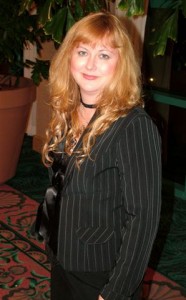 by Jennifer St. Giles
by Jennifer St. Giles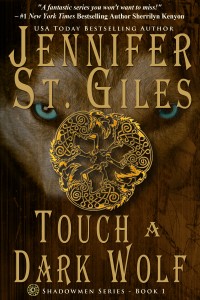 Writing, the creation of story that drives a book or inspires a movie is a solitary, painstaking task. We pull words from our hearts and we figuratively bleed on the page for months at a time to write a book. Not necessarily for any real monetary gain. Very few writers achieve financial success with their efforts. Because even in this digital age where the cost of a book can be relatively low, most people will spend more for a cup of coffee than a book. Writers write because they are compelled to create story. And our reward is learning our story touched another person’s heart, for therein is the true measure of success. So share your appreciation by letting your favorite authors know if they’ve touched you. Give a shout out to their hard work in a review. And if their story wasn’t your cup of tea, then be kind.
Writing, the creation of story that drives a book or inspires a movie is a solitary, painstaking task. We pull words from our hearts and we figuratively bleed on the page for months at a time to write a book. Not necessarily for any real monetary gain. Very few writers achieve financial success with their efforts. Because even in this digital age where the cost of a book can be relatively low, most people will spend more for a cup of coffee than a book. Writers write because they are compelled to create story. And our reward is learning our story touched another person’s heart, for therein is the true measure of success. So share your appreciation by letting your favorite authors know if they’ve touched you. Give a shout out to their hard work in a review. And if their story wasn’t your cup of tea, then be kind. What is the title of your newest book or short story? What’s it about? Where can readers find it?
What is the title of your newest book or short story? What’s it about? Where can readers find it? by David Lee Summers
by David Lee Summers When Danielle Ackley-McPhail asked me to pitch a story for the collection Gaslight and Grimm, one of the stories I suggested was a steampunked retelling of the Grimm Fairy Tale, “The Dragon and his Grandmother.” It was the story of soldiers escaping a terrible war through the aid of a duplicitous dragon. I easily imagined soldiers in pith helmets like my grandfather used to wear. A huge dragon belching smoke and fire, reminded me of a powerful locomotive and I had a flash of a mechanical monster that could have been.
When Danielle Ackley-McPhail asked me to pitch a story for the collection Gaslight and Grimm, one of the stories I suggested was a steampunked retelling of the Grimm Fairy Tale, “The Dragon and his Grandmother.” It was the story of soldiers escaping a terrible war through the aid of a duplicitous dragon. I easily imagined soldiers in pith helmets like my grandfather used to wear. A huge dragon belching smoke and fire, reminded me of a powerful locomotive and I had a flash of a mechanical monster that could have been. By Juliet E McKenna
By Juliet E McKenna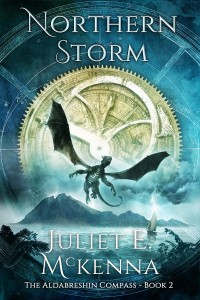 While he’s doing all this, life for everyone else left behind goes on. All those people are still pursuing their own victory conditions. This highlights another fatal flaw of any ‘Hit the Reset Button’ conclusion. A realistic scenario will simply not allow for characters returning to easily slot back into holes and roles in other people’s lives which have been waiting for them, unfilled. Characters having to fight physically or emotionally to regain their former place can work but that’s another story.
While he’s doing all this, life for everyone else left behind goes on. All those people are still pursuing their own victory conditions. This highlights another fatal flaw of any ‘Hit the Reset Button’ conclusion. A realistic scenario will simply not allow for characters returning to easily slot back into holes and roles in other people’s lives which have been waiting for them, unfilled. Characters having to fight physically or emotionally to regain their former place can work but that’s another story.
